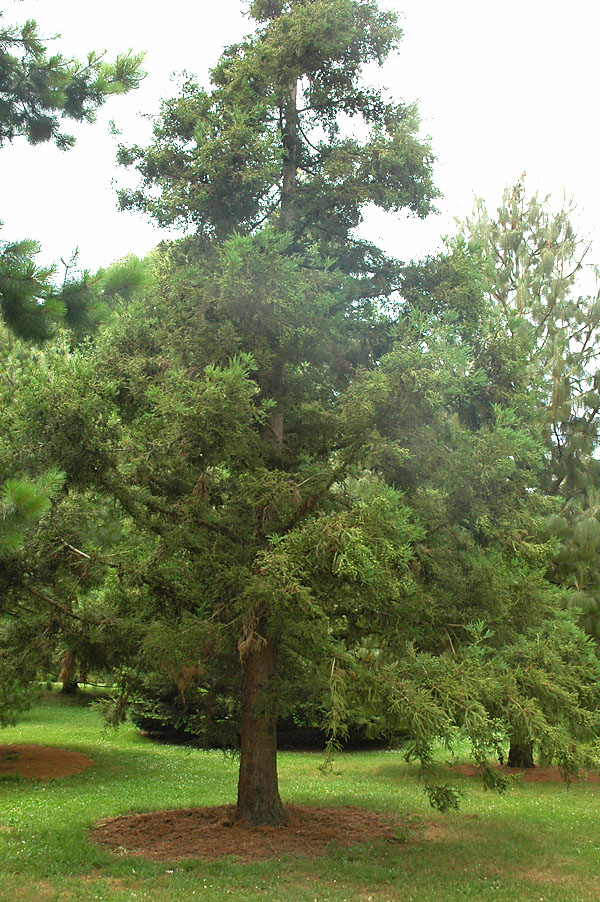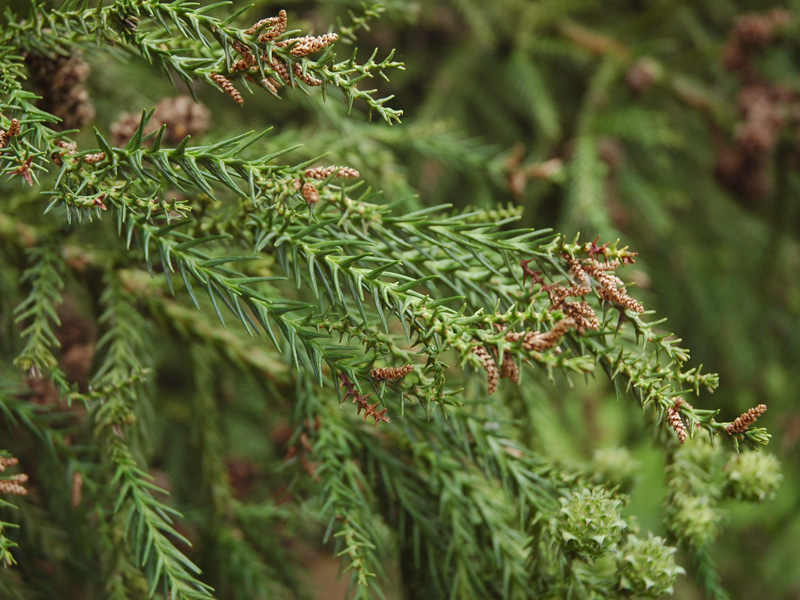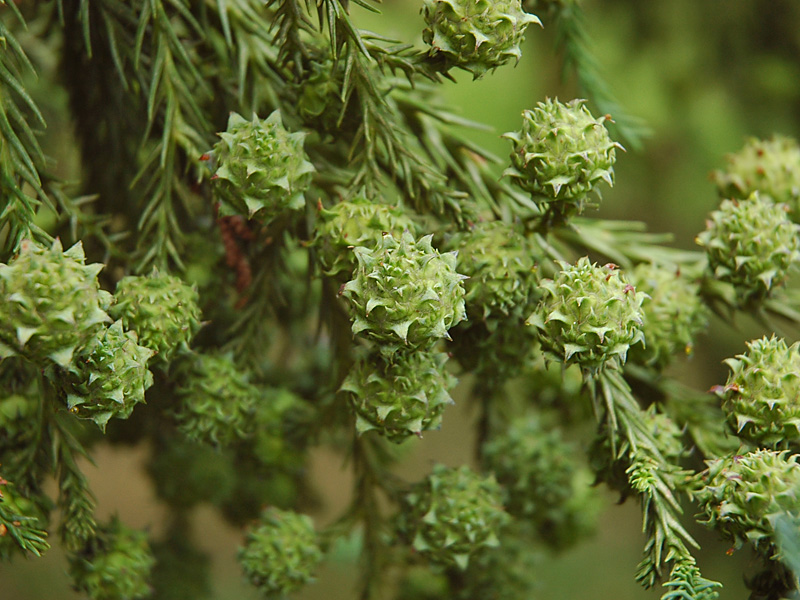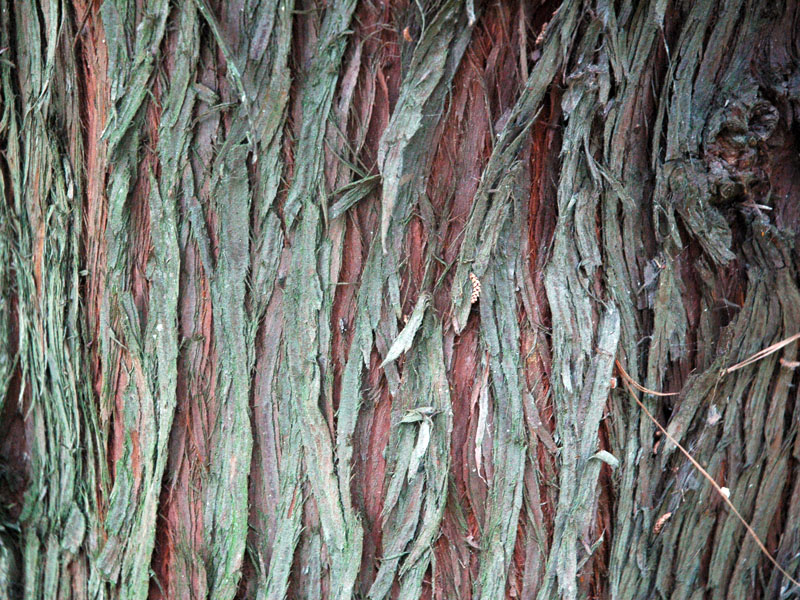
Woody > Cryptomeria > Cryptomeria japonica > Cryptomeria japonica var. sinensis
Cryptomeria japonica
var. sinensis
Chinese Japanese Cedar
Origin: Introduced by Robert Fortune, after the opium wars in China. Fortune was dispatched by the Royal Horticultural Society out of the Chiswick Garden; only one of the expeditions was funded by the society. Fortune spent many years and several expeditions in China collecting plants before returning home. He was a humorless, but tactful and determined individual and was incredibly successful in getting his collections back to England alive; quite a feat given the time period and the difficulties in day to day travel.
Mike's
Opinion


"
Although Cryptomeria japonica var. sinensis flower is not visible it makes up for its lack of floral interest with its exceptionally attractive bark and foliage. This particular variety of Japanese cedar can be used in the landscape as a hedge, shrub, specimen, shade tree or can even be sculpted to be a topiary tree. It provides all year interest by retaining its colour throughout the winter. Allows for easy care, but requires protection from strong winds. It has the ability to hold its leaves for four to five years.
Michael Pascoe, NDP., ODH., CLT., MSc. (Plant Conservation)
"
| Family |
| Taxodiaceae (Cupressaceae) |
| Genus |
| Cryptomeria |
| Species |
| japonica |
| Category |
| Woody |
| Type |
| Tree (evergreen) |
| Variety |
| sinensis |
| Pronunciation |
| USDA Hardiness Zone |
| 5 - 8 |
| Canadian Hardiness Zone |
| 7 - 9 |
| RHS Hardiness Zone |
| H6 |
| Temperature (°C) |
| -20 - (-15) |
| Temperature (°F) |
| -4 - 5 |
| Height |
| 12 - 15 m |
| Spread |
| 3 - 6 m |
Photographs
Description and Growing Information
Flowering Period
| Landscape |
| It can be used as a formal hedge because of its narrow, compact form. It can also be used as a successful shade tree due to its numerous branches that are quite wide spread. This particular varieties growth is quite graceful compared to other commonly used conifers. |
| Cultivation |
| Cryptomeria japonica var.sinensis is an easily grown tree with its exception of needing to be sheltered from strong winds. It grows best in an acidic soil with a moderate moisture level but is slightly drought tolerant. It requires a soil with a pH between 5 and 7. Should be planted in full sun, but will tolerate partial shade. It is slightly salt tolerant. |
| Shape |
| Cryptomeria japonica var.sinensis has a narrow, compact, pyramidal or conical form. It has an erect and stout trunk that is occasionally buttressed. It often has numerous branches that are wide spread, giving it a graceful appearance. |
| Growth |
| Slow |
| ID Characteristic |
| Cryptomeria japonica var.sinensis can be identified by its attractive bark. It peels in long strips to reveal a brownish red inner bark. This colourful bark is paired against a bright green to bluish-green summer foliage, and a black to deep green foliage during the winter. |
| Pests |
| This particular variety is relatively insect/disease resistant but can have minor leaf blight or leaf spot. |
| Bark/Stem Description |
| The bark on the Cryptomeria japonica var.sinensis is quite decorative. The outer bark is a dark brown and peels in long strips to reveal a brownish red inner bark. |
| Leaf Description |
| The leaf is a needle to awl shape and are 6 mm in length. The foliage is a bright green to bluish-green in the summer and black to deep-green in winter. The needles are stiff, rigid and curve inward with a slight twist that points forward. The margin is entire, while the stomata can be found on both surfaces of the needle. |
| Flower Description |
| The flower is inconspicuous.. |
| Fruit Description |
| The fruit is the cone with a measurement of 3 cm in length. The cone is dark brown in a globular shape. The abundance of the cones are male. It contains three to five seeds and twenty to thirty scales. |
| Colour Description |
| The bark is dark brown and peels in long strips to reveal a beautiful brownish-red inner bark. The needles are bright green to bluish-green in summer and black to deep-green in winter. The cone is a dark brown. |
| Texture Description |
| The texture is medium and fine. |
| Propagation |
| It can be propagated by cuttings, air layering or tip layering. Air layering is when a portion of the plant is wounded and wrapped in a moisture barrier. Rooting hormone is often added to encourage new root growth. Tip layering is done by bending a stem back into the ground and covering it with soil so new roots may emerge. |
References
Rouse, Robert J. et al. "Descriptions and a Key to Cultivars of Japanese Cedar Cultivated in the Eastern United States." Hortechnology (April - June 2000): Print.
Stoecklein, Marc C. The Complete Plant Selection Guide for Landscape Design. Second Edition. West Lafayette: Purdue University Press. 2011. Print.



